As mentioned in our last post, we left Lyon, France three days early due to the heat wave and an Airbnb apartment with no air conditioning. After an easy 2½ hour flight on budget airline Wizz Air, we arrived midday in Cluj-Napoca, aka simply Cluj, to a pleasant 75 degrees F. A half hour bus ride from the airport and a ten-minute walk brought us to our home for the next week.
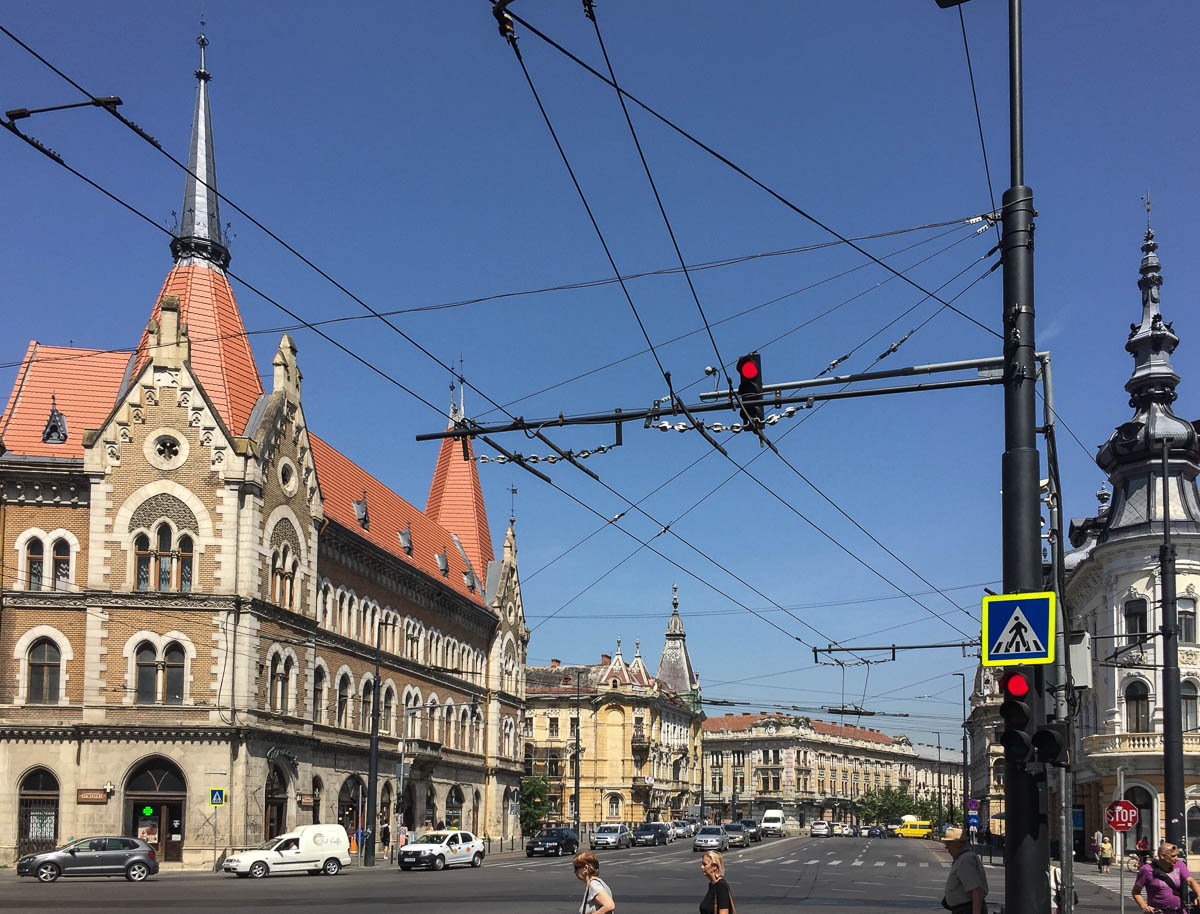
Cluj, in Transylvania, is the third largest city in Romania, right behind Iasi, which is in the northeast of the country on the border with Moldova. It has good mass transit, including buses and trams, both old and new. Cluj has a historic center and many colleges and universities, and lots of coffee shops.
Our Airbnb in Cluj
Located in a residential area on a main street about 10 minutes’ walk from the train station and about 15-20 minutes to the historic center. The apartment itself was bright and airy, and we used the a/c only a couple of times for a few hours. It did have one strange perk (pun intended): the constant sound, coming from the frig, of coffee brewing. It stopped briefly on the fourth day, but so did the actual coffee maker…only briefly.

The buildings are a mix of old and new side by side. Even the Communist era block buildings have largely been updated with decorative touches and color.
Cluj Free Walking Tour
As we often do in a new city, we did a free walking tour, with an excellent guide. We saw many of the highlights of the city and learned a lot about its history.
Transylvania was part of the Austro-Hungarian Empire during the 18th and early 19th centuries, with Cluj as the provincial capital. Today, Hungarians make up 30% of the population of Cluj, and the two nationalities get along well, despite some unfriendly relations in the past. At that time, Romanians were treated as second class citizens.
Tour Highlights
Our tour started in the central Unirii Square, with its statue of Matthias Corvinas in front of St. Michael’s Church. Born in Cluj, Matthias Corvinas was king of Hungary from 1458-1490, known for his diplomacy and success with financial reforms. Also in the square are Romanian ruins, seen underground through glass at street level.


Our tour took us past other sights including the Cluj-Napoca National Theatre, home of the Romanian Opera; Avram Iancu Square (named for a revolutionary leader; and the Memorandists’ Monument, to name just a few. This monument was erected in 1994 to mark the hundredth anniversary of the petitioning by Romanian leaders to the Austrian-Hungarian Emperor, Franz Joseph, to give Romanians in Transylvania equal rights to Hungarians.

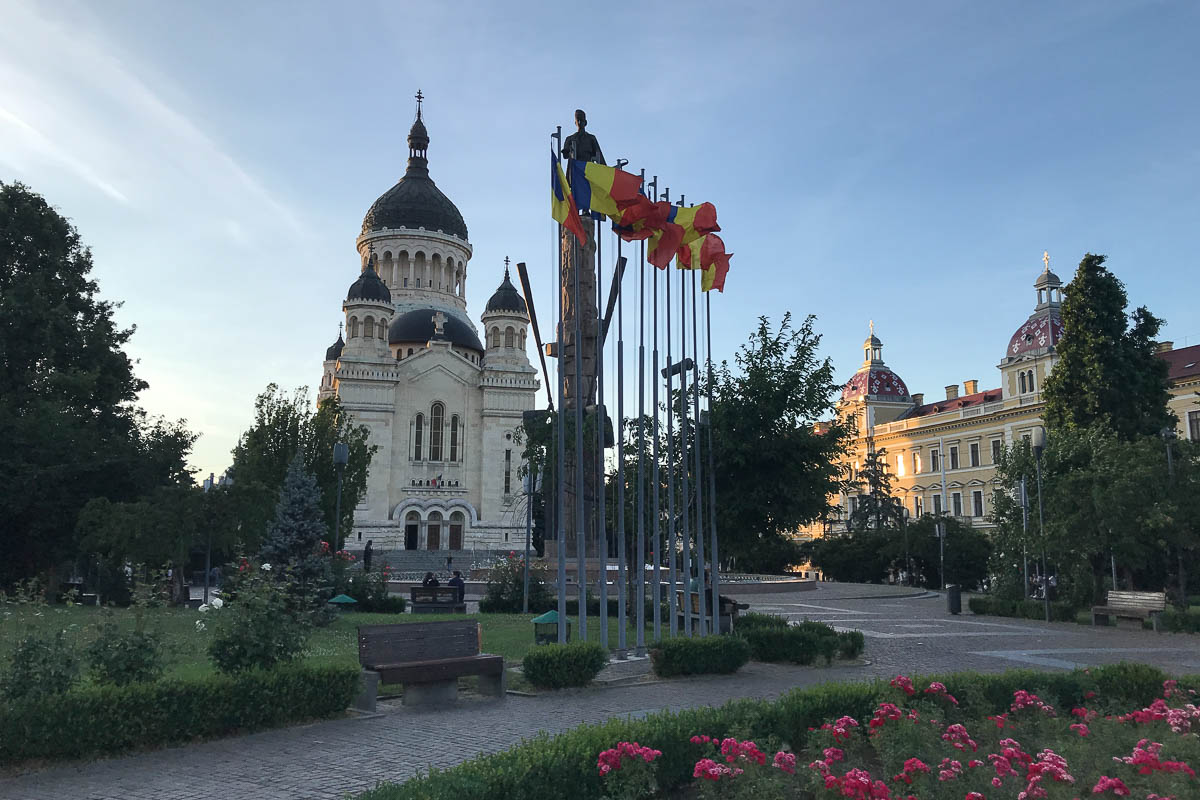
Side note: Transylvania did not become part of Romania until the end of WWI.
Random Thoughts
During the tour, our guide pointed to the massive new Orthodox church currently being built. For some reason, we both found this somewhat strange. Perhaps because all the other Orthodox churches we’ve seen in our travels were built quite some time ago.
Another side note: During our stay in Cluj, we couldn’t visit many of the historical sights, including St. Michael’s Church, as they were under renovation with an influx of EU money.

Our Other Activities in Cluj
Central Market
If you’ve been following us, you know that one of our favorite pastimes in each new place is a trip to the Central Market. Cluj’s central produce market, which we actually had difficulty finding, was not nearly as fancy as in western European cities we’ve visited. (For examples, see Krakow, Las Palmas, Santander, Avignon, Dijon.) But everything we bought was tasty and very inexpensive.

We found that most of the vendors did not speak English, and our Romanian doesn’t go much beyond please and thank you. But every time we tried to purchase something, a nearby local customer who did speak English, stepped up to help. How’s that for friendly people!
Cluj-Napoca Central Park
One day, we enjoyed a long, leisurely stroll through Cluj’s Central Park. The park is massive, with lots of trees, several wide paths, and a grand fountain. Near the fountain is a lake where one can rent boats, including some in shapes of cars and swans. The park even has a large section designated for stringing hammocks from the trees. On the edge of the park is a large stadium and a great kids’ play area. From the park, we could see Belvedere Hill.

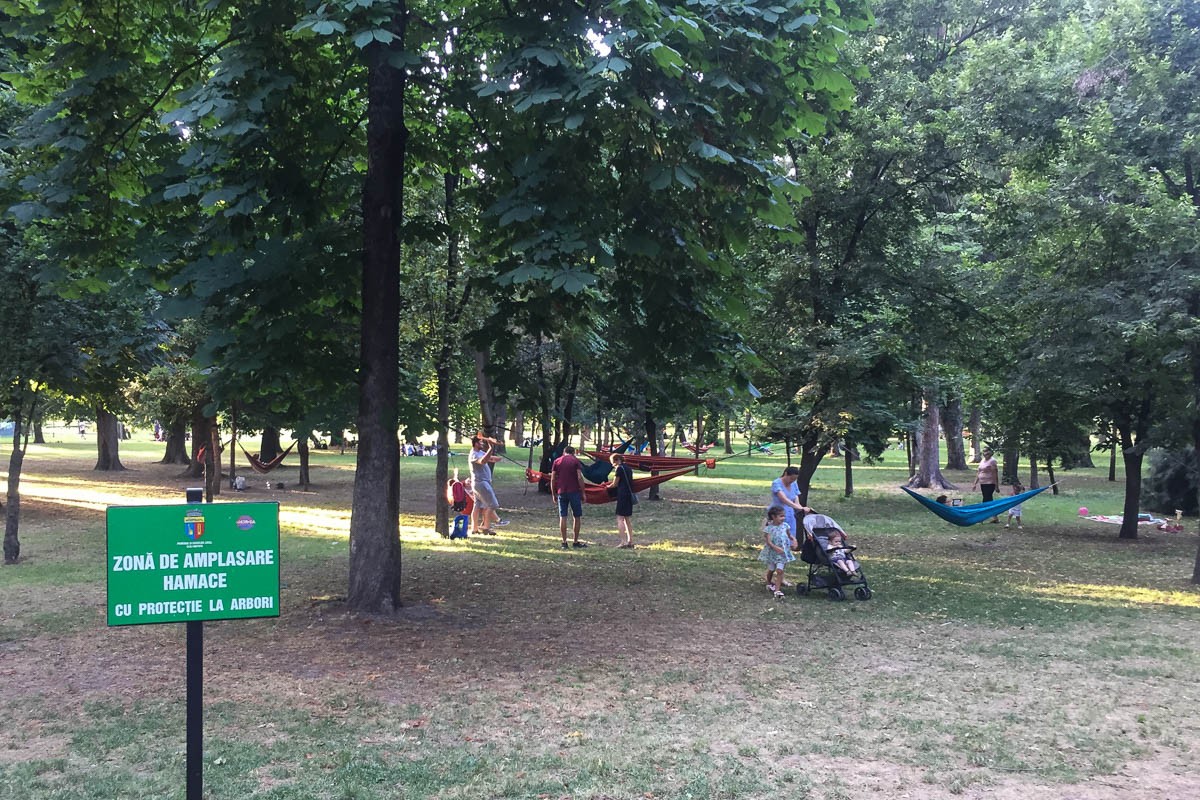
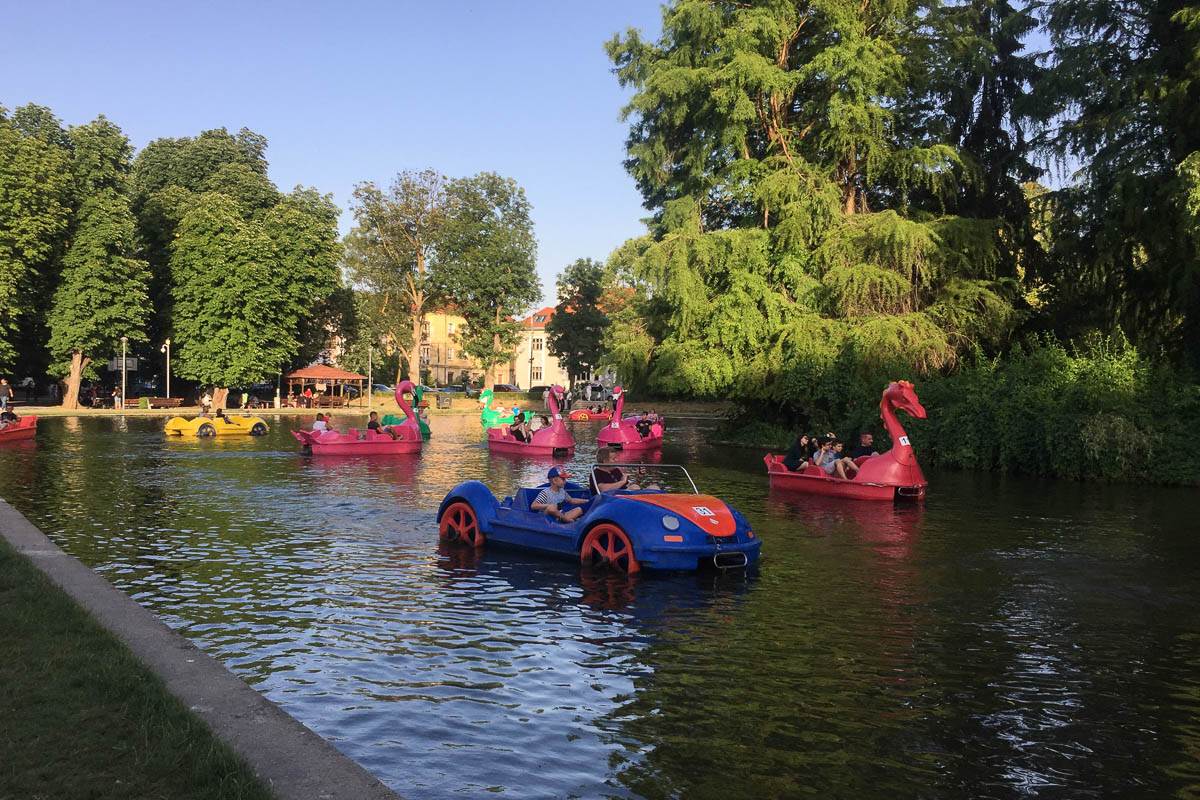
Belvedere Hill
Another day, we climbed the 200+ steps to the top of Belvedere Hill for views over the city. Considering how much we enjoy climbing steps, wouldn’t you know it, we missed a turn and climbed extra. This misstep (another pun?) took us to the Belvedere Hotel and a rather nice upscale neighborhood. As we walked along the edge of the hill peaking through the trees in attempts to see the view, we ended up back where we should have been in the first place, with expansive views of the city.
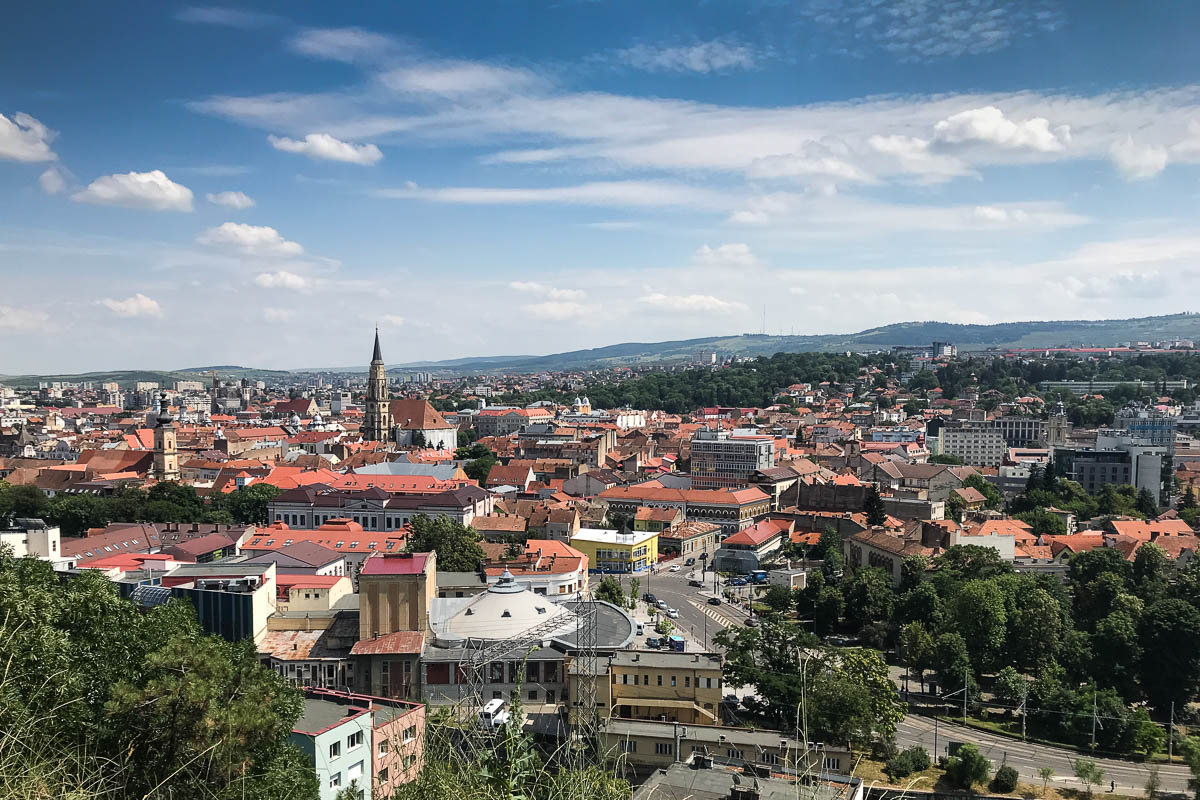
While writing this post, we learned that the hill is actually named Cetatuia Hill, but locals just call it Belvedere. Cetatuia means fortress, and a fortress (later used as a prison) was built on this site in the 17th century when Transylvania was occupied by the Austrian-Hungarians. Very little remains of the fortress today.

Cluj-Napoca Botanical Garden
We spent a delightful couple of hours wandering through the impressive Cluj-Napoca Botanical Garden. Besides its different sections with a large variety of plants and trees, including a Japanese Garden, we walked along various tree-lined paths. There were even cacti to make us feel at home! We were particularly impressed by a small section of plants with explanations in braille.

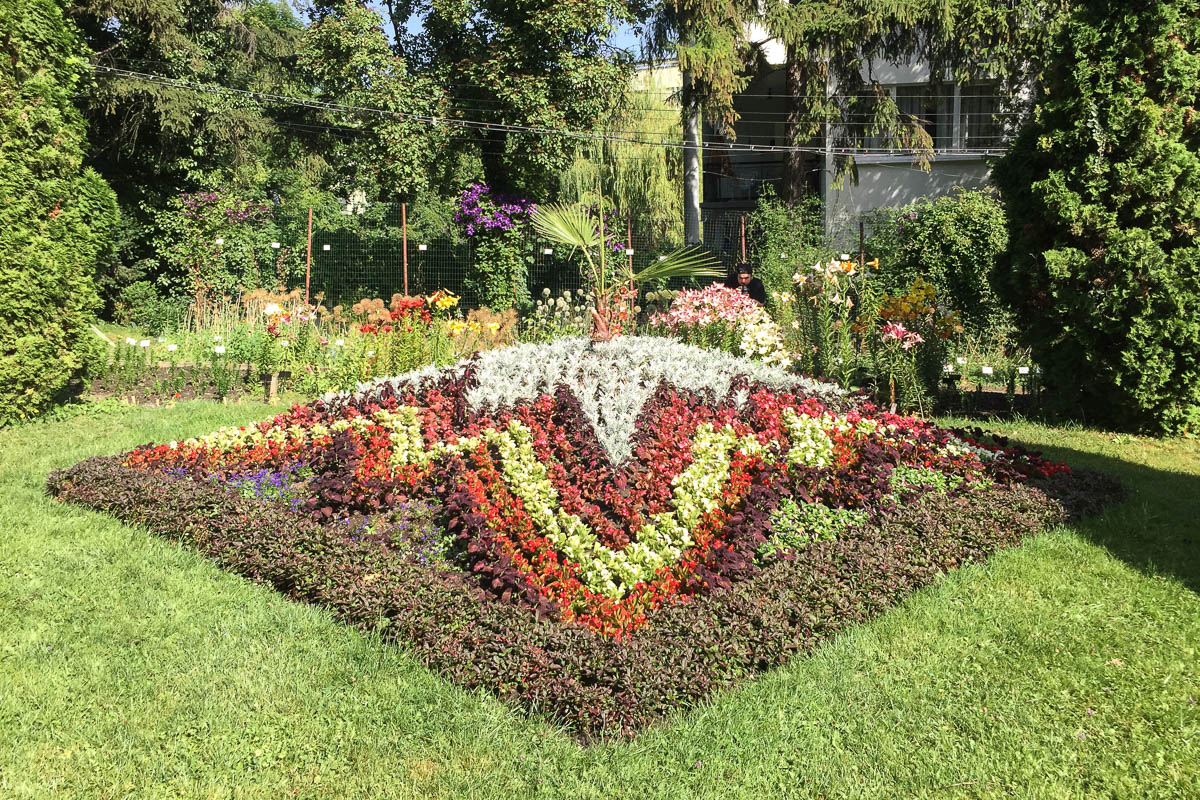
Day Trip to Turda Salt Mine
Getting to and From Turda Salt Mine
To…
Our tour guide from the walking tour had told us to simply get the bus from such and such a place. We knew the place she was talking about, but good thing Ian did some additional research! That “place” was a conjunction of roads going different directions with several different buses stopping at various places along the streets.
Even with Ian’s research, getting to and from the salt mine turned out to be a bit of a comical misadventure.
Our walk to the main bus station took us through a neighborhood that had a different look from where we were staying. So, it was an opportunity to see another aspect of the city.
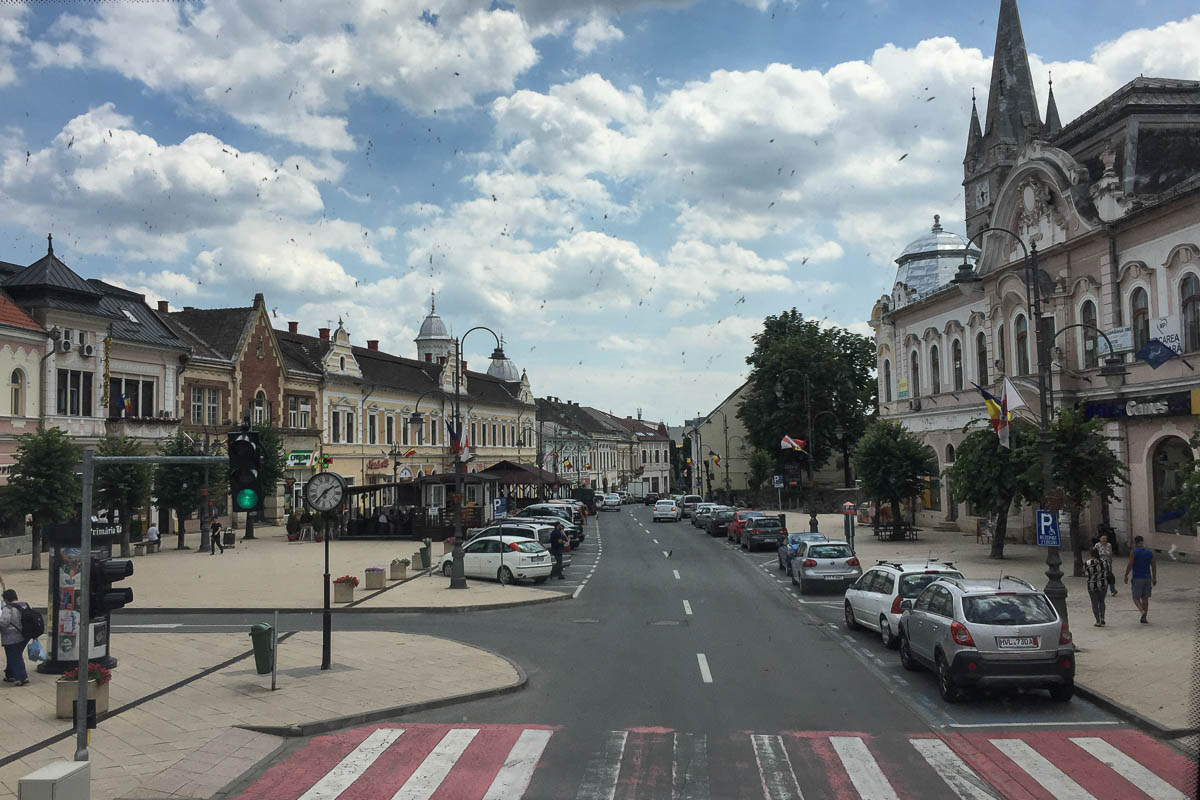
When we got to the town of Turda, we crossed the road to get to the stop for the local bus to the salt mine. Apparently, we needed to cross to the far side of both roads, we only crossed one. We went a short distance where everybody had to get off the bus, and we waited for another bus. That other bus drove right past the location where we got on the first bus, going in the opposite direction.
And From…
The town of Turda itself is small, kind of cute, nothing special. After visiting the mine, we uneventfully made our way back to the very small Turda bus station. We had to wait quite awhile for the next bus. The whole time we were waiting, there was a man just hanging out at the station who made it his job to make sure we got on the right bus (which turned out to be a van) back to Cluj.
Turda Salt Mine
How often do you get to go down into a salt mine? And how often do you get to go down into a salt mine with an underground amusement park, complete with a lake for boating?!

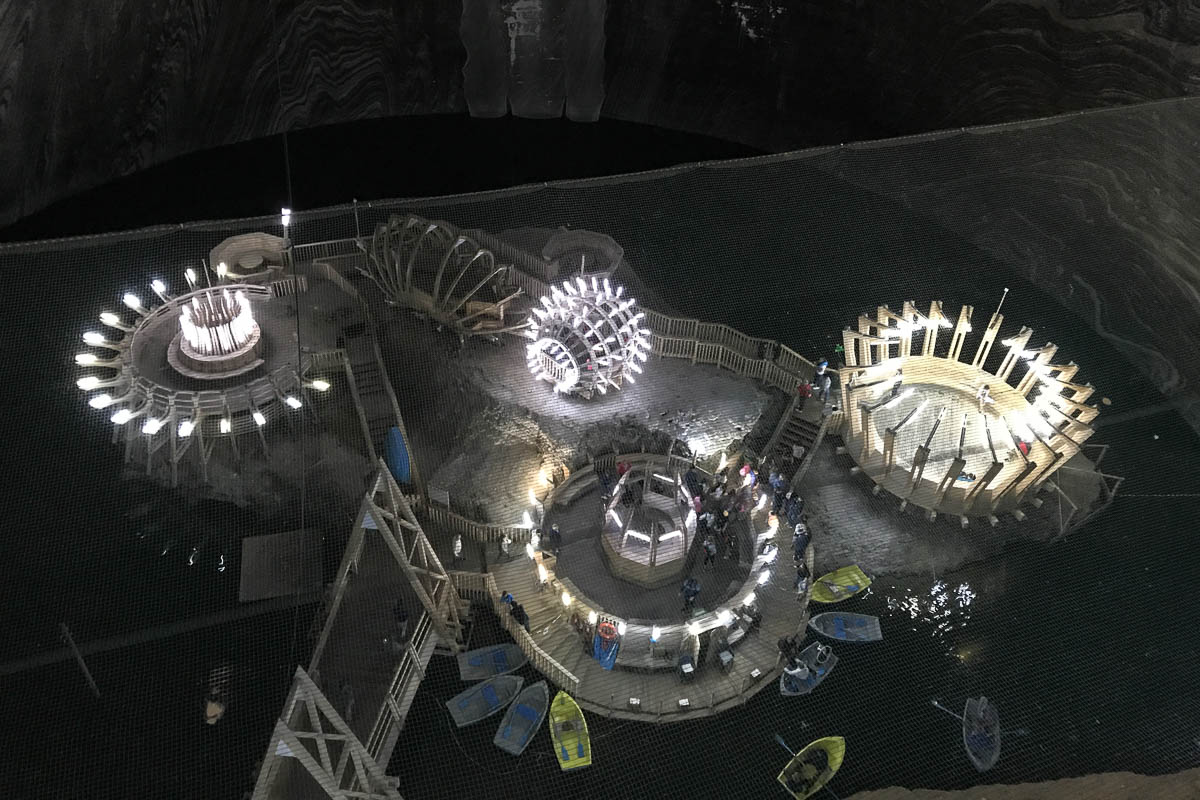
Outdoors at the mine site, one can also swim in a couple of salty lakes. We saw people arriving with gear for what looked like a day at the beach.
Besides having an underground amusement park, Turda Salt Mine is a museum of the history of salt mining. Only a limited number of people at a time are permitted to enter the mine. As it was a weekday, we didn’t have to wait long.
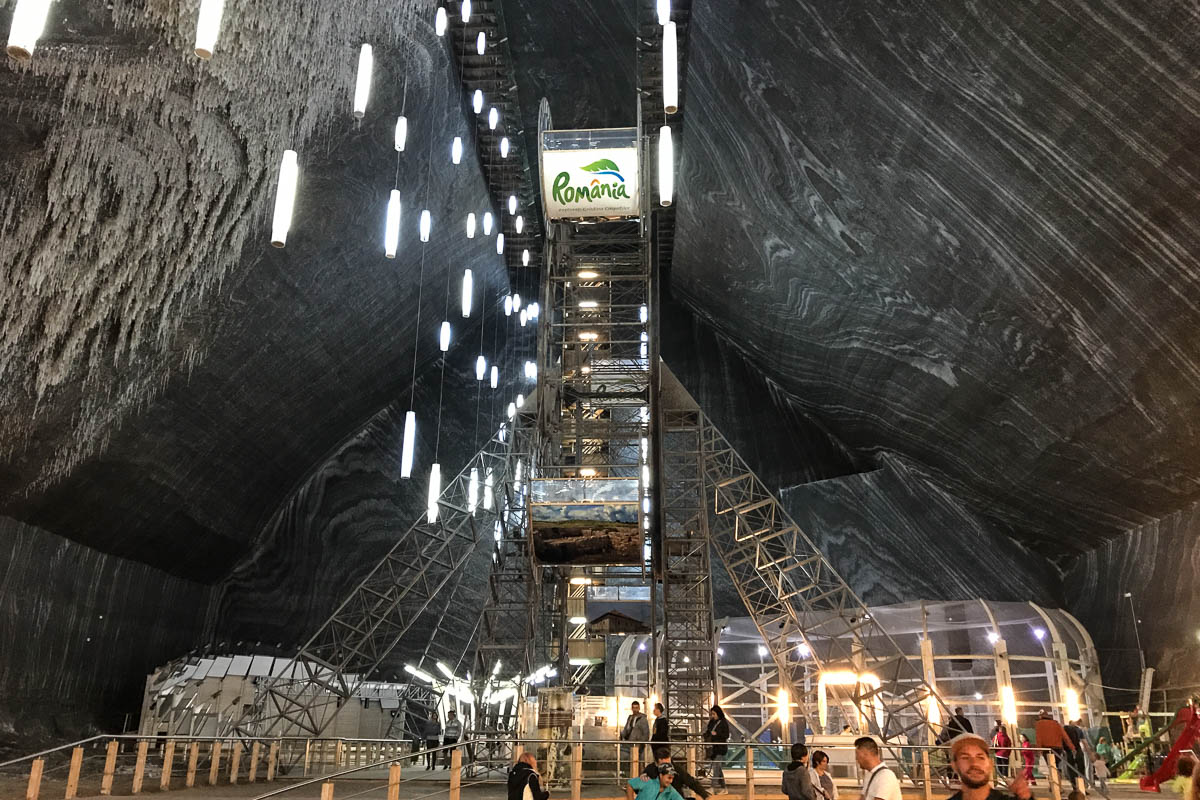
Inside the Mine
As we walked through the somewhat slippery pathways to get to the spot to descend deep into the bottom of the mine, we had fun touching the walls and tasting the salt on our fingers. We passed on the opportunity to walk down the many partially acrophobic (Ian) and partially claustrophobic (Ann) steps to the bottom of the mine. We waited (not long) instead for the amazing glass elevator with a maximum capacity of seven people.

We brought our jackets since the temperature at the bottom of the mine is 10-12 degrees C (50-54 F). The sheer size of the mine and composition and appearance of the walls was truly amazing! And yes, we saw a Ferris wheel, miniature golf, pool tables, ping-pong, a playground, and the lake for boating.

Cluj Wrap-up
Although Cluj was never under consideration as a possible long-term destination, we had thought about visiting the city since our time in Romania last summer. Coupled with the convenient airfare mentioned at the beginning of this article, Cluj made for an enjoyable stop on our way back to Brasov, our true love in Transylvania.
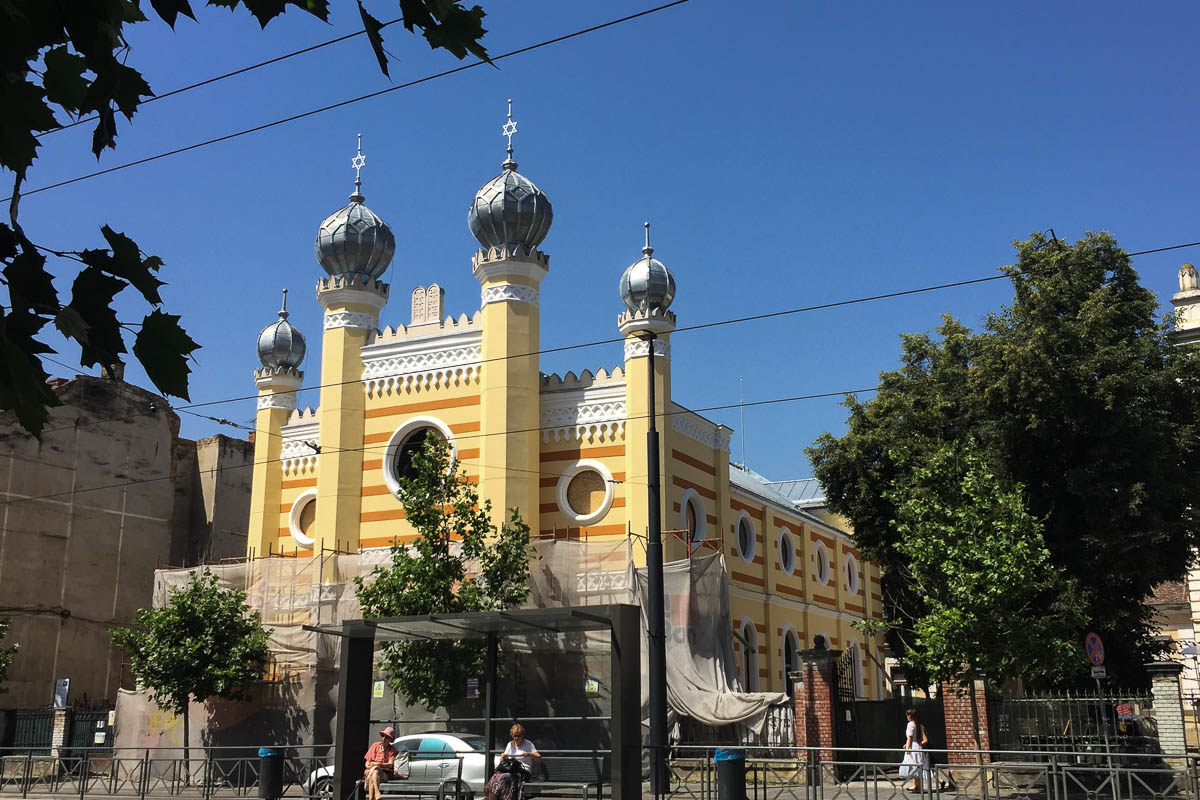
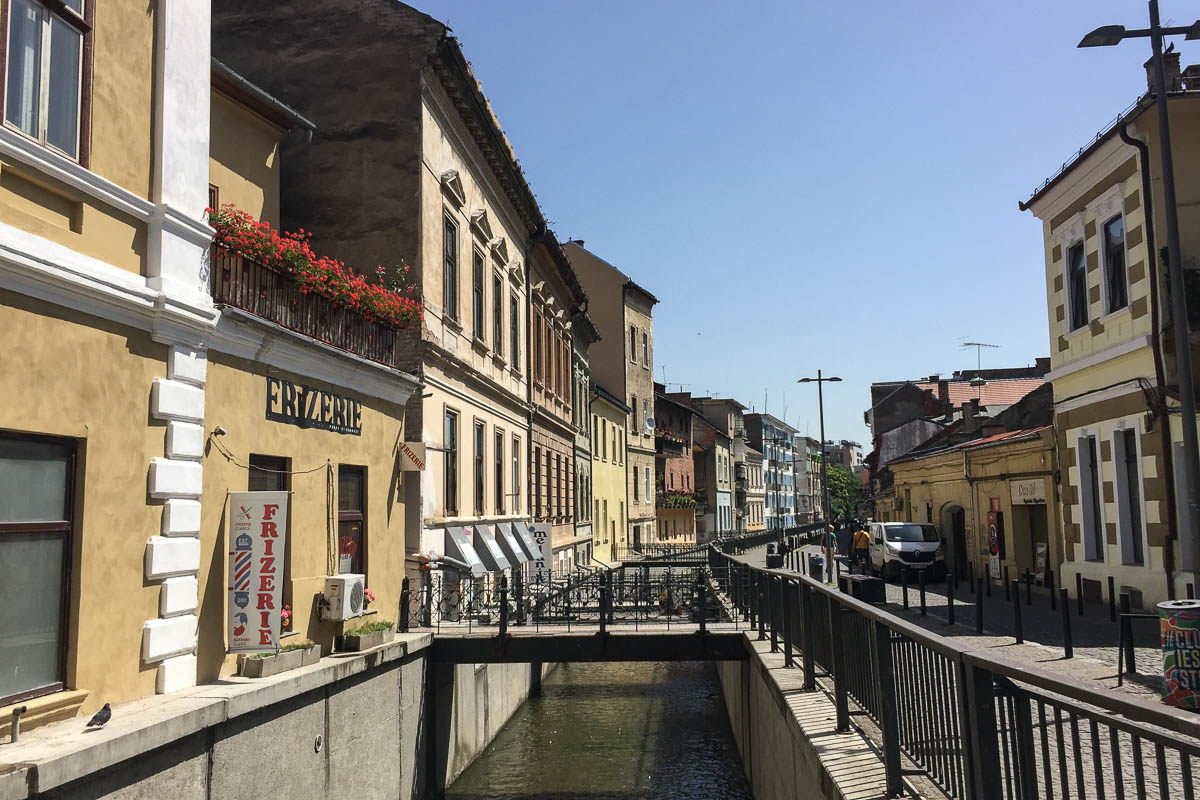
Next up: August In Gdansk Poland
Ian and Ann

6 Comments
Wow! What a great stop!!! And you got tonsownd a week!
Hi Joan,
Yes, it’s always nice to be in one place for at least a week.
Ian and Ann
I assumed Romania is poor and backward, but these pictures show a pleasant environment with no evidence of homeless people. What is the quality of life like for most Romanians?
Hi Art,
As with any country, it’s difficult to generalize across the whole population. While Romania, like most countries, has its poorer areas and marginalized population, mostly the Roma(Gypsies), the people in the major cities we visited last summer and this summer appear to live comfortably. Although salaries are low, so are costs. That said, a quick Google search paints a somewhat grimmer picture. Also, the larger cities offer a wide range of cultural activities, many of which are free or affordable. In addition, as in some other Eastern European countries, a sizable percentage of the younger people have left to go to Western Europe because they can earn more money.
Ian and Ann
Do you have an address or exact location for the Central Market in Cluj Napoca? It isn’t on Google Maps and all I can find are vague descriptions like “The Central Market is located behind the commercial complex, Mihai Viteazul” (which I also cannot find!)
Hi Cris,
Thank you for your question. LOL, we had the same problem. If we remember correctly, we kept walking aroung the area, asking differnet people, unitl we eventually found it. It’s near and behind a mall near the center of town, and there might be a small sign. A very unasssuming place, indoors. with amazingly friendly and helpful people, not to mention good amd inexpensive produce. Best of luck! Please let us know that you found it!
Ian & Ann